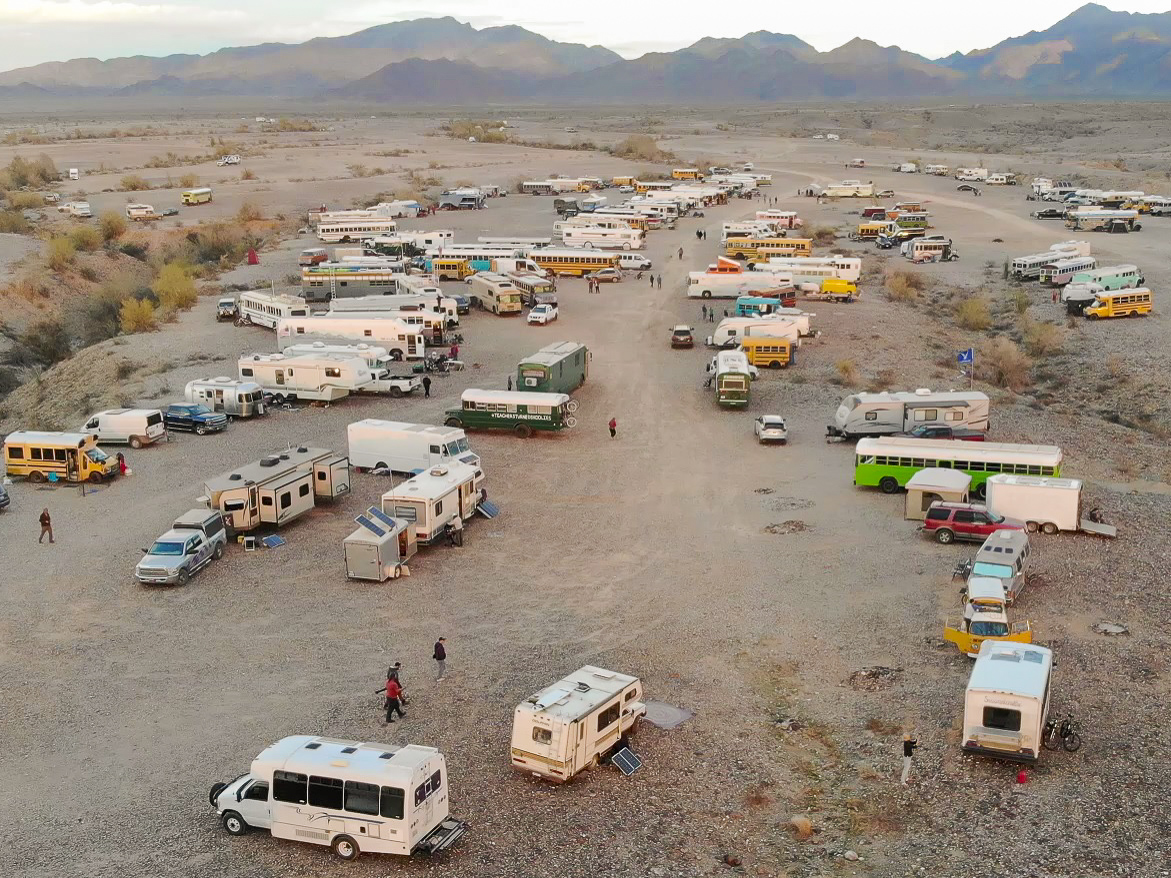Most school districts (and other government agencies) auction their buses at govdeals.com and publicsurplus.com. These two websites make for some incredible bus shopping and this is where most of the deals are found. You will be bidding on school buses, sight unseen unless you are local to them, but don’t be afraid to call a district auctioning a bus to find out much more information. You just might speak with a friendly and knowledgeable mechanic who knows that bus well. And having said that I would advise you to pick up the phone and call all of your local school districts, private, and charter schools, because some of them even sell their buses outside of auction, locally, and therefore only to buyers who are aware. There are some real deals to be found out there for the go getters.
You can also prowl eBay, Craigslist, Facebook Marketplace, Offerup etc. for vehicles that have changed hands perhaps more than once. There are definitely some bargains out there as you will discover in the chapters to come that converting a school bus is very hard work and many will call it quits shortly after removing the seats. That being said you will have to put in some significant due diligence as you DO NOT want to build your future tiny house on a platform plagued with someone else’s problems which means you need to be skeptical, patient, and hire a diesel mechanic to inspect once you’re serious about a vehicle.
This brings us to what I think is another valid and viable option for your bus purchase: the used school bus dealer. There are not that many of them and so I’ve found they are generally held to a reasonable standard by their consumers (unlike your odd used car lot), who are generally repeat customers such as churches, limousine/party bus companies, ski resorts etc. However you can expect to pay a premium of a couple or several thousand dollars more for a vehicle that has been purchased, possible serviced, and sold by a dealer. It could be worth it for you to pay that added expense.
Here is a list of school bus dealer’s I’ve encountered in my search:
- https://www.aaabussales.com
- https://www.midwesttransit.com/cc-used-school-buses-for-sale/
- https://www.wesellschoolbuses.com
- https://nwbus.com/school-buses-for-sale/
- https://www.rohrerbus.com/bus-sales/inventory-of-buses-for-sale/
- http://www.a-zbus.com/pre-owned-bus/ (actually where we bought our Gillig Phantom)
Now that you are effectively window shopping for a bus it’s time to dial in exactly what sort of a bus you want to buy. There are 3 prevailing styles of school buses that you will find commonly being sold by districts. Here are their pros and cons:
The Dog Nose school bus is the most common with an engine in front of and protruding from the vehicle. This is perhaps the most sensible conversion candidate. It has the most accessible and easy to work on engine, it has a large crumple zone to protect the driver, it only has one set of wheel wells to build around however it has the least amount of interior square footage as compared to bus length. It also has a drive shaft running between the front and rear wheels limiting the ability to build storage or hang tanks underneath your bus (but it does not generally eliminate that option), and finally it is less maneuverable than the flat front buses, but you can easily acclimate to this with driving practice and experience.
The Front Engine school bus has a flat front with the engine built into the front of the bus. The driver is positioned in front of the wheels with a great view of the road and a flat front short bus is by far the most maneuverable of your conversion options. A big perk to the flat front and the dog nose is also the rear doors giving you the ability to build a “garage” into the back of your bus. The main downside to the front engine (in addition to the drive shaft issue found in the dog nose bus) is that it’s loud and hot engine is now sitting right next to the driver and presumably near any passengers and so comfort while driving is compromised. However some efforts can be made to mitigate the heat and noise with additional engine compartment insulation, and after all every school bus will be noisy to an extent.
The Rear Engine school bus has an engine in the back of the bus which means that there is not a drive shaft running the length of the undercarriage and so storage under the bus is plentiful. It also has the most interior space given that the main bed can be installed over the engine bay. With an engine in the back noise is minimal in the front of the bus and added heat is not an issue. The rear engine bus while the ideal conversion option for some does have a few drawbacks. Namely these buses tend to be the largest. Rear engine short buses were not made. You also lose the option of the garage doors at the rear of the bus, and their engines are apparently the least accessible for major repairs.
In the end, pick whichever bus style you are drawn to the most and which best serves your needs.
Next up lets talk about what Engines and Transmissions you should look for in a Skoolie.
Photo by our friends Little House on the Highway





2 Comments
I have a question about if you need to obtain your CDL or not before driving the school bus. Because a lot of the CDL tests I look at for a school bus is asking questions about students and what not when you obviously aren’t going to be transporting kids. Just wondering if you felt it was necessary to get it.
You don’t need a CDL to drive a school bus for “personal use” and with no commercial passengers.